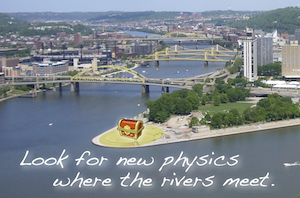Speaker
Bryan Ostdiek
(University of Notre Dame)
Description
We study the implications at the LHC for the minimal (least) version of the su-
persymmetric standard model. In this model supersymmetry is broken by gravity
and extra gauge interactions effects, providing a spectrum similar in several aspects
to that in natural supersymmetric scenarios. Having the first two generations of
sparticles partially decoupled means that any significant signal can only involve
gauginos and the third family of sfermions. In practice, the signals are dominated
by gluino production with subsequent decays into the stop sector. As we show,
a clear discovery at the LHC is possible at \sqrt{s} = 14 TeV, but will require large integrated luminosities.
Authors
Antonio Delgado
(University of Notre Dame)
Bryan Ostdiek
(University of Notre Dame)
Jorge de Blas Mateo
(University of Notre Dame)
